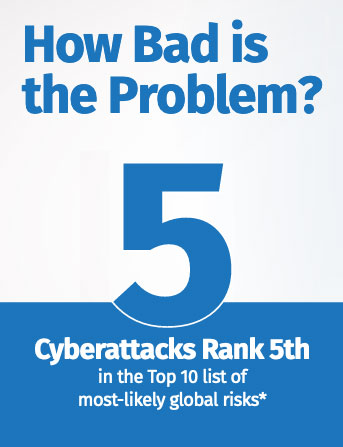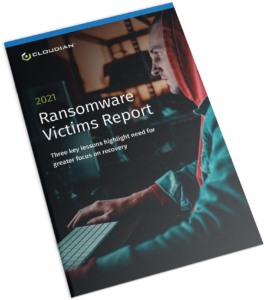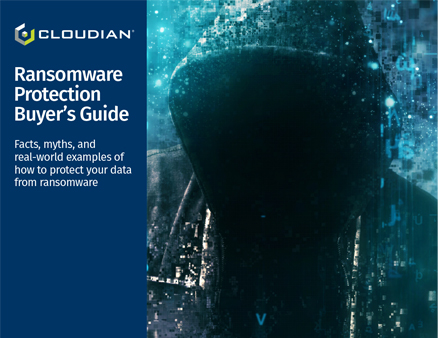Ransomware is a clear and present danger and is globally considered one of the foremost threats to enterprises today.
What is Ransomware?
Ransomware is a malicious software designed by organized cyber criminals, aka “bad actors”, who determinedly work to infiltrate enterprise systems, steal and encrypt their data, and extort hundreds of thousands to millions of dollars from these hacked companies and their customers.
In the past, most of the attackers simply ask for the money in exchange for a key to the encryption so that companies can get access to their data again, but a recent evolution has been to leak sensitive or proprietary data or sell it off to others.
Recently Amazon introduced S3 Object Lock which stores objects using a write-once-read-many (WORM) model. This functionality provides both data protection—including extra protection against accidental or malicious deletion as well as ransomware—and regulatory compliance.
To learn more about the evolution of ransomware, what ransomware is, the impact of ransomware, and how to defend against ransomware, check out this on-demand webinar: The Rise of Ransomware and How It Has Impacted Enterprise Data Security
Learn more about protecting your files in our detailed guide to ransomware backup.
This is part of an extensive series of guides about ransomware data recovery.
List of Ransomware Attacks in 2024
Attacks in December 2024
Ransomware Victims Report
Ransomware is one of the most widely discussed threats in cyber security. However, not enough research exists about the experiences of organizations that have actually suffered from ransomware attacks.
For this report, an independent research firm surveyed 200 IT decision makers whose organizations experienced a ransomware attack.
The findings reveal the cold, hard truth about such attacks:
- They are hard to prevent even when you’re prepared.
- Ransomware can penetrate quickly, significantly impacting an organization’s financials, operations, customers, employees and reputation.
- Even if you pay the ransom, there are other related costs that can be significant
Read this report to learn about:
- The experiences of ransomware victim organizations
- The importance of focusing greater attention on recovering from an attack
- How you can quickly and easily recover without having to pay ransom
Attacks in November 2024
Attacks in October 2024
Attacks in September 2024
Attacks in August 2024
Attacks in July 2024
Attacks in June 2024
Attacks in May 2024
Attacks in April 2024
Attacks in March 2024
Attacks in February 2024
Attacks in January 2024
Attacks in December 2023
Attacks in November 2023
Attacks in October 2023
Attacks in September 2023
Attacks in August 2023
Attacks in July 2023
Attacks in June 2023
Attacks in May 2023
Attacks in April 2023
Attacks in March 2023
Attacks in February 2023
Attacks in January 2023
Attacks in December 2022
Attacks in November 2022
Attacks in October 2022
Attacks in September 2022
Attacks in August 2022
Attacks in July 2022
Attacks in June 2022
Attacks in May 2022
Attacks in April 2022
Attacks in March 2022
Attacks in February 2022
Attacks in January 2022
Attacks in December 2021
Attacks in November 2021
Attacks in October 2021
Attacks in September 2021
Attacks in August 2021
Attacks in July 2021
Attacks in June 2021
Attacks in May 2021
Attacks in April 2021
Attacks in March 2021
Attacks in February 2021
Attacks in January 2021
Attacks in December 2020
Attacks in November 2020
Attacks in October 2020
Attacks in September 2020
Attacks in August 2020
Attacks in July 2020
Attacks in June 2020
Attacks in May 2020
Attacks in April 2020
Attacks in March 2020
Attacks in February 2020
Attacks in January 2020
Ransomware Protection Buyer’s Guide
Don’t let your company be next. Download our guide to understand ransomware threats and what you can do to protect your organization.
Typical Ransomware Attack Sequence
Van Flowers joins Jeff Lanza, a 20 year FBI veteran, to discuss REAL ransomware situations, cybercrime impact on companies, and what you should be looking out for to keep your company safe. The best defense is always being proactively prepared, and they’ll show you how protecting your data with object lock / immutability can prevent you from being yet another “it happened to me” on the FBI’s list of victims.





